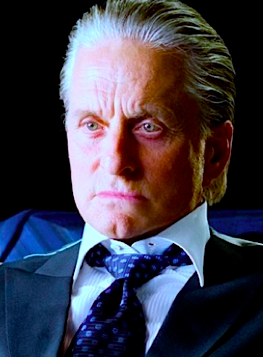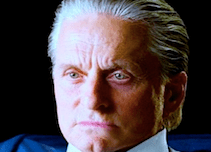 “You wanna know what the mother of all bubbles was? Us. The human race.”
“You wanna know what the mother of all bubbles was? Us. The human race.”
That’s Gordon Gekko in the distinctly-mediocre Wall Street: Money Never Sleeps.
This weekend brought a rush of stories about a “bubble” that may or may not be re-inflating in Silicon Valley. The New York Times kicked it off, venture capitalist Fred Wilson (who is featured prominently in the story) quickly responded, and then Newsweek weighed in just to make sure the “Bubble 2.0” moniker was secure. Uh oh, right? Not so fast.
One giant nugget of information in the NYT piece (co-written by TechCrunch alum Evelyn Rusli) is a bit buried:
For starters, this is not a stock market bubble. None of the companies are publicly traded.
In other words, if this “bubble” were to pop, it wouldn’t be the mothers and fathers of the world hoping to put their children through school who would be getting screwed. It would be the private investors. It would be a handful of (mostly) rich people who would be out of some of their money.
I suppose the employees of the collapsing startups could also be screwed somewhat. But they’d undoubtedly find work again quickly. And the founders would start new companies. Just like after the first bubble.
Business Insider has a good rundown of the actually public tech companies — you know, the kind mom and pop can and do actually invest in. The consensus there? Pretty wonderful, actually. Not over-the-top outrageous, just very solid for the most part.
Now, that doesn’t mean a “Bubble 2.0” couldn’t pop and adversely affect the overall ecosystem. In fact, I’m sure it would to some extent, mainly because less money coming in would mean less innovation across the board. But it wouldn’t cause everything to collapse.
We all just lived through a very real bubble. The housing bubble. The results of it popping almost completely brought down not only our own economy, but much of the world’s economy as well. Real people lost their life savings. People went to jail. More people should have been locked up forever. It’s almost insulting to mention this supposed new web bubble in the same breath as that.
Again, this “Bubble 2.0”, if it does exist, is mainly just troublesome for investors. Smaller angel investors, in particular, are getting squeezed out of deals because early stage valuations are getting ridiculously high in some cases.
Undoubtedly it’s true that some of those startups should not be accepting so much money at such valuations, but that’s on them. If they fail, it will be a lesson to other startups. Maybe the motto is: go big and go home (at least in the early stage).
Another underlying current here is that many private investors aren’t comfortable with the state of the startup ecosystem. And yet many of them continue to do deals that they may not be comfortable with. Again, that’s on them. They’re all doing due diligence. If they don’t think a deal is worth it, they obviously shouldn’t do it. But some don’t seem to be able to turn down their name being attached to a high-profile investment — even if projections have it panning out to be a 2x exit. (The horror!)
Maybe some of them would actually be more comfortable investing in what Wilson calls “The Mess“. That is, startups in their awkward years. They’re neither new and sexy nor mature and money-making. Not surprisingly, no one seems to want to invest in those, besides current investors. But maybe those are where some deals are to be found.
In the press, there are two kinds of sexy stories to write: over-exuberance and death. We just got done with a week’s worth of over–exuberance surrounding the Google/Groupon deal. Holy shit, $6 billion dollars for a company that has only really been at it for a little over a year? That’s awesome! Let the good times roll.
The deal ultimately fell apart and in came the death stories. There needs to be balance in the world, after all. We know this just as well as anyone. The $6 billion Groupon deal made web investing as hot as the sun for a few days. And now it’s a bubble.
But wait. “Bubble 2.0” has existed before. Here it is in 2005 — with Wilson worrying about some of the same things he’s still worried about. And here it is again in 2007 — with John Dvorak worrying that social media among other things would pop the bubble. And wasn’t it for sure a bubble later that year when Microsoft invested in Facebook at a $15 billion valuation? I was sure I heard that over and over and over again. Turns out, that was a pretty damn awesome investment, strategic or not.
There are dozens of other examples as well.
So maybe this is actually “Bubble 4.0” or “Bubble 5.0”. Or maybe it’s not a big bubble at all. After all, if it pops and gum gets over only a few faces, will anyone do anything other than point and laugh, then go on with their lives?
[image: 20th Century Fox]
